This week’s selection from Greg Primm’s Classic Steel is the ground shaking 1986 Honda CR500R.
This week’s selection from Greg Primm’s Classic Steel is the ground shaking 1986 Honda CR500R.
By: Tony Blazier
1986 was a great year for Honda. In racing they took home the National Motocross Championship in every class from 125 to 500. In Supercross, they swept the podium with Rick Johnson, David Bailey and Johnny O’Mara capturing the top three spots. In motocross magazines CR’s claimed the top spots in every class. In 1986, if you were on anything else but a Honda, you were at a real disadvantage.
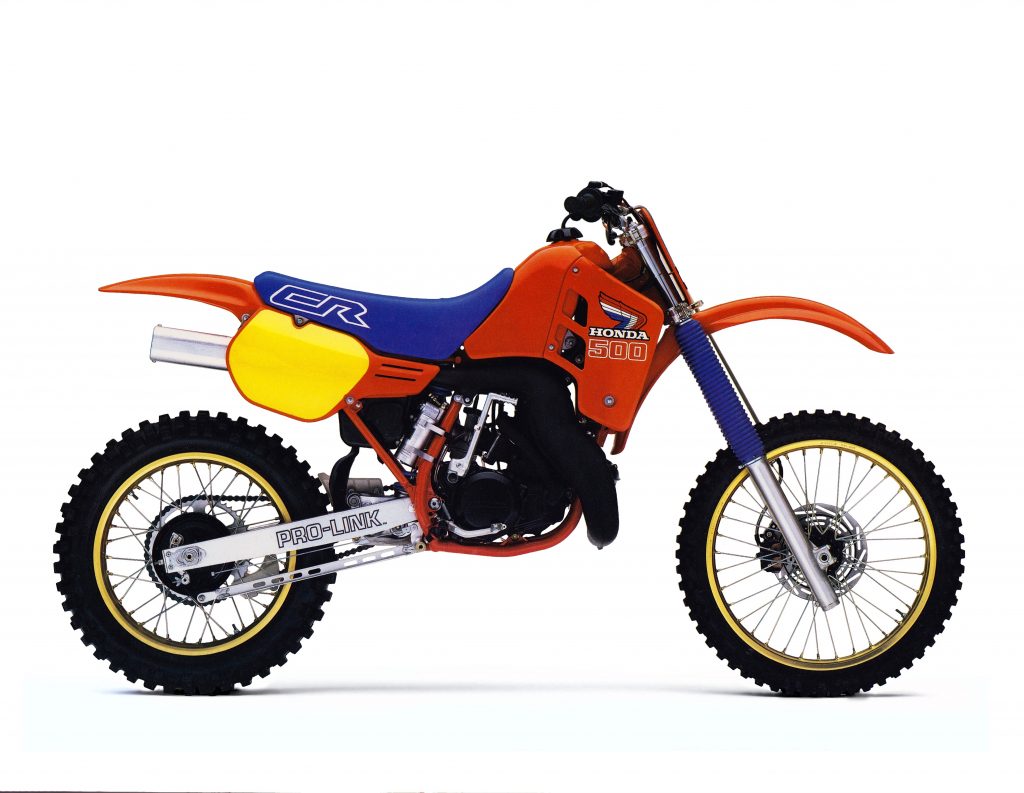 |
| The 1986 CR500R was a big bike with big power. Everything from starting the beast to just hanging on required a lot of muscle. Wimps need not apply. Photo Credit: Honda |
The 1986 model year marked the first time in four years that Honda had not totally redesigned its big bore CR. The ’83 CR480R had been a fantastic bike, loved by the public and press alike. The ’84 CR500R had been just the opposite, frustrating riders with its violent power and unfortunate habit of blowing up. The ’85 CR had introduced liquid cooling, and gone a long way toward domesticating the notoriously unruly CR500R. Gone were the days of impossible jetting and questionable reliability. The ’85 CR500R introduced a whole new era of serious Honda Open class racers. For ’86, Honda took its very good ’85 CR500R and with a little refinement, made it worlds better.
 |
| One of the all-time ground pounders, the ‘86 CR500R put out horsepower and torque in buckets full. This motor was more than most novices could handle. One ride was enough to scare many a rider back to the 250 class. This basic motor design would live on for nearly two decades, powering Honda 500s into the new millennium. Photo Credit: Stephan LeGrand |
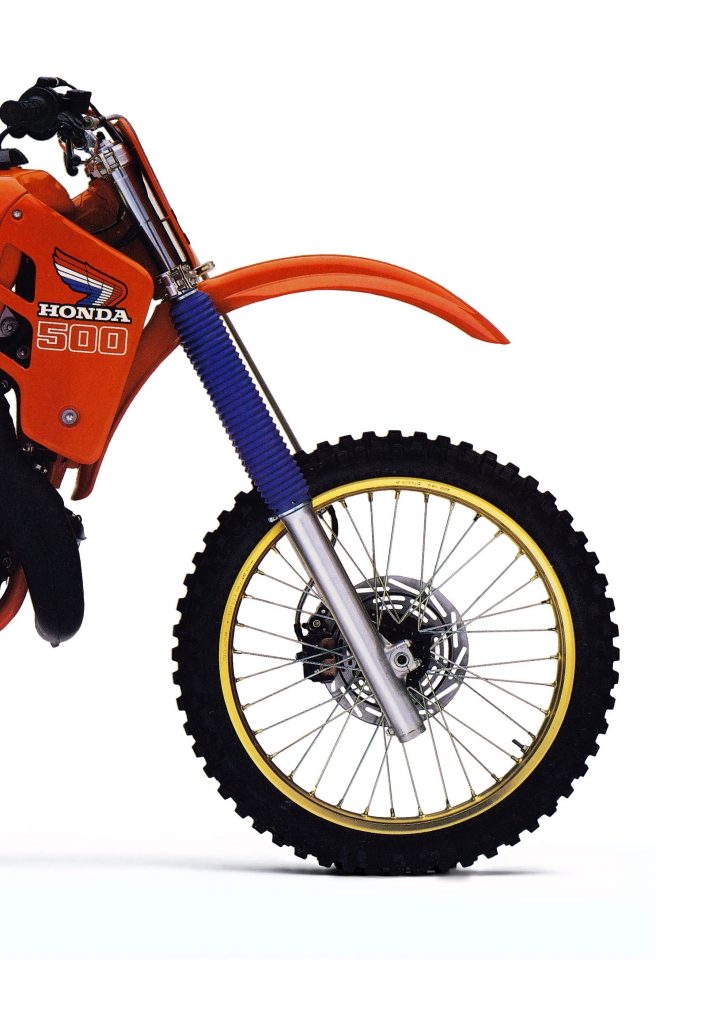 |
| In 1986, these were the Jedi Masters of the fork wars. The all-new 43mm “cartridge” forks on the full size CRs were ultra-plush and by far the best forks in the 500 class. Photo Credit: Honda |
Starting with the ’84 model, Honda CR500R’s were all mid-range monsters. The ’84 model was so violent that most people found the bike nearly impossible to handle. The ’85 model had brought with it better carburation and a slightly less terrifying power delivery. For ’86, Honda’s goal had been to make the rocket ship CR even easier to ride, without losing its horsepower advantage. This would become a common theme every year on the big bore Hondas. By 1992 the CR500R would be a pussy cat compared to the burly, hairy chested mid-eighties models. The manufacturers were quickly learning that there was only so much power the average person could handle, and these two stroke monsters were pushing that envelope to the very limits. Ride-ability was the new buzz word in the 500 class.
 |
| It took a guy like David Bailey to handle all the mighty CR500R could dish out. Photo Credit: Motocross Action |
 |
| I always loved these Honda “wing” graphics. They were clean, classy, and a far cry from the hideous cartoon graphics that would be plastered on CR’s in the early 90’s. Photo Credit: Stephan LeGrand |
In 1986, the Honda engineers changed the piston, head and ignition timing in order to smooth out the ’85 CR’s massive hit. The result was a slightly less sudden low-to-mid transition and decent over-rev. The CR was still not as easy to ride as the KIPS-equipped ’86 KX500, but at least it was capable of being ridden by normal human beings. The excellent shifting five speed transmission offered a gear for every situation and the sturdy clutch was more than up to handling the Honda’s massive power. The ’86 Honda was at its best when short shifted and torqued around the track. If you made the best use of its ample torque curve, you could set blistering laps on the 500 Honda.
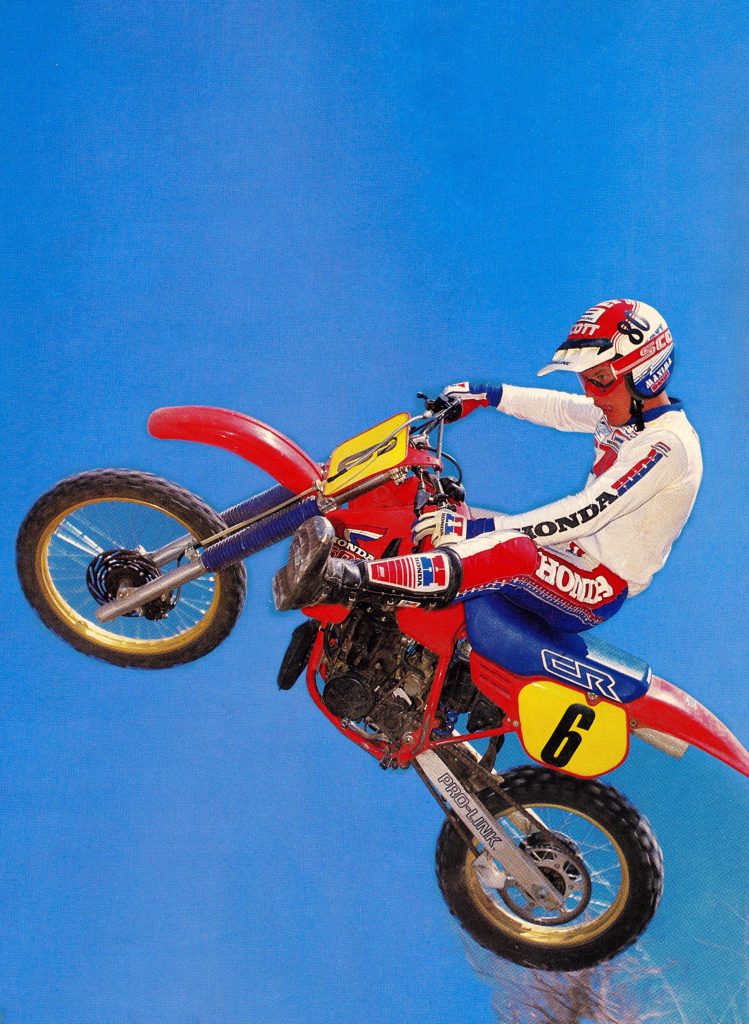 |
| Another cool feature on Honda’s of this era was the color-coded number plates. The bike’s plates came pre-painted to match the bikes class. 125’s were black, 250’s white and the men’s machines were yellow. It was cool little features like this that added to the mid-eighties Honda mystique. Photo Credit: Ketchup Cox |
The 1986 CRs were the first production machines to receive Showa’s new “cartridge” fork damping system. Cartridge forks had been a staple on works racers for years, and in ’86, the technology finally made its way to the general public. The cartridge system allowed for more precise damping control and a wider range of tuning than traditional damper rod designs. In ’86 that put Honda miles ahead of its competition in the fork wars. Out back, the story was not as good. The Pro-Link rear shock was slightly harsh and not nearly as refined as the Showa forks.
 |
| A guided missile is a good way to describe a 500cc two-stroke. Modern 450cc four-strokes actually put out power comparable to these old beasts but they do it in a much friendlier manner. The sudden explosion of power these bikes produced made them a semi-terrifying thrill ride. Photo Credit: Honda |
The handling of the ’86 CR500R was typical mid-eighties Honda, with excellent turning habits and an aversion to fast rough straights. Few things in the world are as terrifying as a 60hp 230 pound rocket trying to shake you off its back at 50mph. Headshake on these bikes was no joke, if it started oscillating that front end lock to lock, the only thing to do was say a prayer and hold on for dear life. Riding these bikes was a scare-a-minute affair in more ways than one.
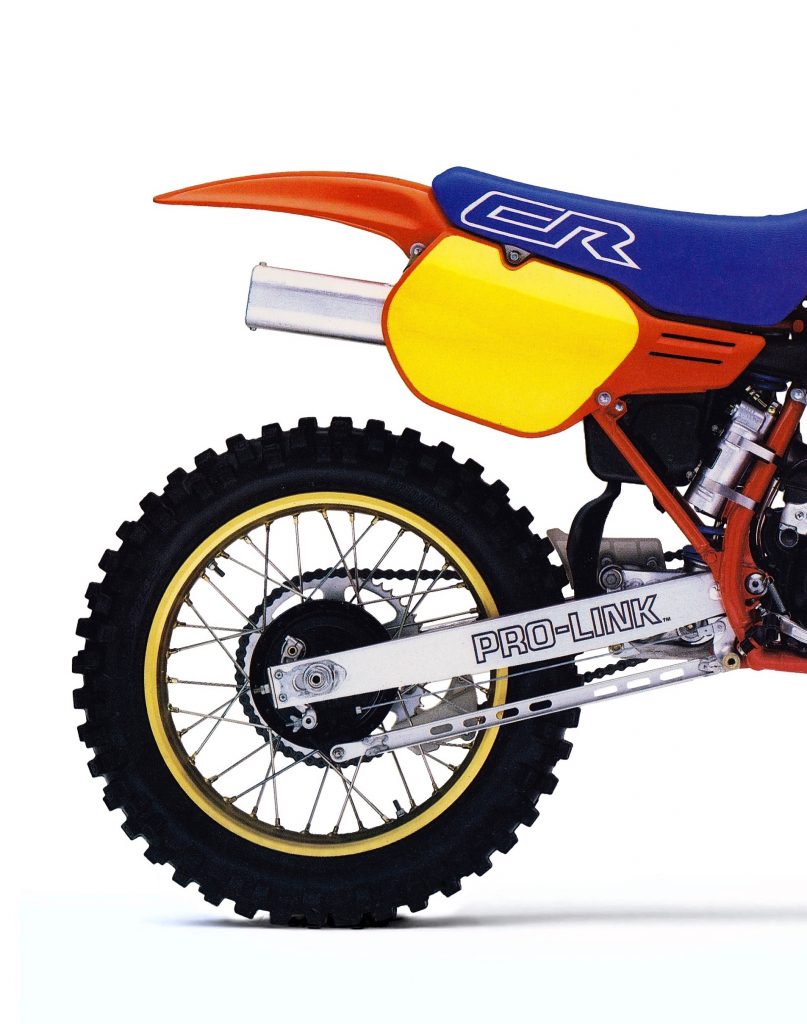 |
| The ’86 CR’s would be the last ones to use a drum brake. In 1987 Honda would upgrade all the full-size CRs with a hydraulic disc binder Photo Credit: Honda |
Fit and finish on the ’86 CR500R was excellent and light years better than on the competition. All the parts fit excellently and nothing broke or fell off unexpectedly. Some features, like a fully removable sub frame, would not make their way onto the competition for another five years. The only complaint with the fit and feel of the CR was its very bulky layout. The CR500R suffered from a giant bulging gas tank which made moving around on the bike difficult. The porky body work made the bike feel heavier than its 223 pounds would suggest.
 |
| Early 500 two-strokes were plagued by detonation and inscrutable jetting. Liquid cooling and better carbs like this flat slide Keihin finally got the big bores to run as cleanly as their smaller brothers. Photo Credit: Stephan LeGrand |
 |
| Another feature that ended with the ’86 CRs was the remote mounted reservoir shock. In 1987, Honda went to an odd “piggyback” reservoir shock which mounted the can on top of the shock body. This design suffered from overheating problems and only lasted the one year. The ’88 CR finally saw the debut of the familiar integrated remote reservoir shock design we still use today. Photo Credit: Stephan LeGrand |
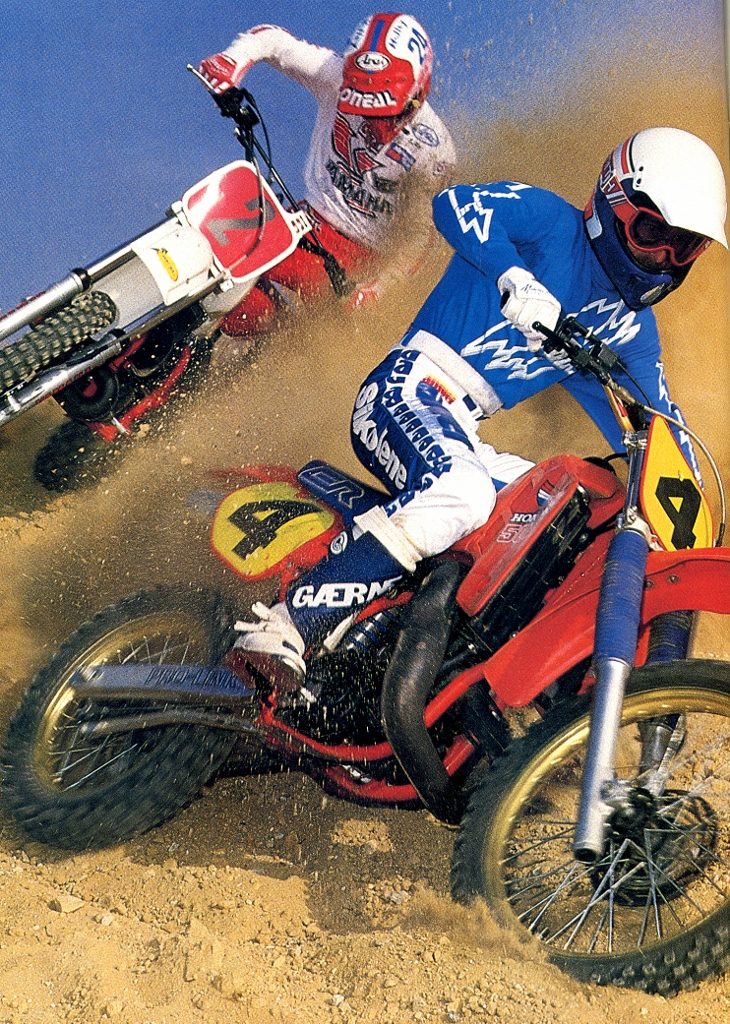 |
| The move to liquid cooling did have one drawback. The large radiators meant that the tank had to be moved farther back into the riding compartment. The huge bulging tank made sitting forward in turns difficult and added greatly to the feeling of mass the CR500 imparted to the rider. This was no small bike, and you felt it whether on the stand, or on the track. Photo Credit: Dirt Bike |

A great bike with a mediocre shock, the 1986 CR500R was a incredibly effective, but not for the faint of heart. Photo Credit: Honda
With its burly powerband and big bike feel, the CR500 was certainly no bike for a beginner. This was a serious motocross weapon that would punish the careless. If you were the kind of guy that absolutely refused to get pulled up that big hill though, this was the bike for you. If you were man enough, the ‘86 CR500R was ready. In 1986, thrill riders did not get any better than this.





